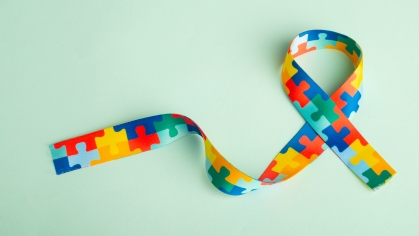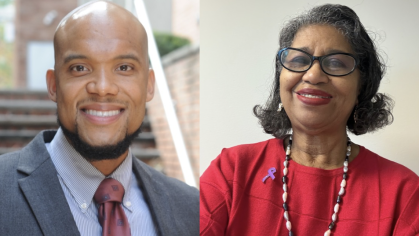I was 6 years old when I learned my new friend’s mother used a wheelchair. Despite contracting polio as a young woman, remarkably Mrs. Virtue raised 6 children while not being able to walk or fully use one of her arms. I was fascinated by how Mrs. Virtue navigated her world from a wheelchair, but as I grew up, I began to realize how inaccessible the world was and the difficulties she had to endure. This injustice sparked my passion to advocate for those with disabilities. I was especially happy when nation sought to become more accessible through the passage of the Americans with Disabilities Act ("Americans with Disabilities Act," 1990) on July 26, 1990, although it was a long road for nation to take this important step.
The roots of disability policy in the US can be seen in our earliest social welfare programs. Throughout history, disability policy has received an inconsistent level of attention reflecting shifts in societal attitudes regarding disability and values and beliefs about those with disabilities (Switzer, 2003). Even today society asks if individuals with disabilities can or should contribute to the work environment, while others feel that those with disabilities should be protected and not be encouraged to participate at all.
Some of the inconsistency in how we perceive disability comes from the fact that as a society, we also do not all agree on how to define disability. Defining disability is challenging because the concepts it is seeking to define are complicated and multidimensional (Altman, 2011). A disability can have a physical, intellectual or cognitive, sensory, emotional, and/or psychiatric basis, and be in combination. Disabilities can range not only in severity, but also in the ways impairment may impact an individual’s independence. Disabilities can be visible such as the inability to walk as with my friend’s mother or a disability can be invisible or not easily detected at first glance such as someone with a traumatic brain injury, a bipolar disorder, or a hearing loss. Over time, descriptors of disabilities or impairments have gone from ones with negative connotations (e.g., crippled, invalid) to ones that seem more empowering (e.g., differently abled, nondisabled). There are phases that put the “person first” as is the person with a disability (ADA National Network, 2018) versus ones that places the individual with an “identity first” reference such as disabled person (Dunn & Andrews, 2015). The advent of the International Classification of Function, Disability, and Health Model (ICF model) promoted the use of identify-first language with its dynamic view of impairments and activity limitations within society (World Health Organization, 2001).
The variation on how individuals have been perceived and treated by the public poses challenges for disability policy makers and advocates. Early inhumane treatment of those with mental illnesses was observed in the 1840s by pioneer reformer Dorothea Dix (Stern & Axinn, 2018). Not only did Dix help lead the national and international movements to enhance treatment for those with mental disorders, she also was a strong advocate against the dehumanizing practices used in their “care” such as caging, physical restraints, and being chained while naked (Parry, 2006). In the 1960’s, over 100 years after Dix’s advocacy, poor treatment of those with disabilities persisted. A lack of funding for care for those with mental illness/mental disabilities, and the few facilities that did exist were characterized as dirty, racially segregated, and socially isolated. The movement toward deinstitutionalization for those with mental illness followed, beginning with government support for research on better care for those with mental illness as well as the development of more effective medications (Paulson, 2012). Several policies followed, including The Mental Retardation Facilities and Community Mental Health Centers Construction Act, a policy to move individuals with mental illness out of institutions and into the community ("Community Mental Health Centers Construction Act, Mental Retardation Facilities and Construction Act,," 1963) which promised treatment and rehabilitation (Fleischer et al., 2001).
Beyond impacting an individual’s health and mental health, a disability can also impact one’s educational, vocational, and economic status, as well at individual rights. Beginning in the 1970’s, the “human rights approach,” the foundation for the disability rights movement, promoted equal rights for all individuals with mental and physical disabilities. In the late 1970s the independent living movement began which included improving accessibility, providing resources/supports, and helping individuals to have more control over their lives (Braddock, 2002). This movement gained strength from the growth of the field of medical rehabilitation and the Rehabilitation Act of 1973’s Section 505 rules which supported the idea that individuals with disabilities require supports to live independently in their inaccessible communities. The barriers identified in the community were not just architectural, but also legal, educational, and attitudinal (Braddock, 2002).
Finally, in 1990, the Americans with Disabilities Act ("Americans with Disabilities Act," 1990) which guarantees reasonable accommodation to promote access to employment and hiring practices, public services and buildings, and telecommunications became law. The ADA was seen as a new civil rights act granting equal rights to individuals with disabilities and protecting them from discrimination (Burgdorf, 1991). More specifically, under the guidance and enforcement of the federal government, it provides a national requirement for the elimination of discrimination against individuals with disabilities with very clear and consistent, enforceable standards. It also gives Congression authority to address the major areas of discrimination that people with disabilities may encounter on a daily basis such as telecommunication and commerce. Today, the accommodation principle means using remote work options, as well as flexible hours and individualized reasonable adjustments to tasks and technologies to enable full and equal economic participation across all disabilities(Findley & Gross, 2021).
More recently, the National Center on Health, Physical Activity and Disability (NCHPAD), founded in 1999, is a federal public health practice and resource center focused on health promotion for people with disabilities (https://www.nchpad.org/). This center helps individuals with disabilities and other chronic health conditions achieve greater levels of health by supporting their participation in physical and social activities, recreational and sports programs, and instruction on adaptive equipment usage. NCHPAD also offers training programs to educate all service providers (whether focused on those with or without disabilities) to promote community health inclusion. Despite its focus on disability, this movement is helping to bring inclusion for all with limitations, including older adults. It is becoming more common to see public spaces that are built with inclusion in mind, rather than retrofitting environments to make them inclusive.
As social workers, we must continue to promote the rights of individuals with disabilities by never overlooking opportunities to advocate. Despite all of the laws that have been enacted, our world is still inaccessible. It has been 32 years since the ADA was passed, there are many ways to celebrate this through actions suggested by: https://adaanniversary.org/ideas-celebrate-ada/ including contact legislators to update legislation, ensure playgrounds meet ADA guidelines, get your additional training for yourself about working with individuals with disabilities, or get involved in a community event that is promoting disability awareness. Let’s all take action to make our world more inclusive and accessible.
References
ADA National Network. (2018). Guidelines for writing about people with disabilities. https://adata.org/factsheet/ADANN-writing
Altman, B. M. (2011). Disability, definitions, models, classification schemes, and applications. In G. Albrecht, Seelman, K., Bury, M. (Ed.), Handbook of Disability Studies (pp. 97-122). Sage Publications.
Americans with Disabilities Act, 42 U.S.C. § 12101, (1990).
Braddock, D. (Ed.). (2002). Disability at the dawn of the 21st century. Washington, DC: AAMR.
Burgdorf, R. L. (1991). The Americans with Disabilities Act: Analysis and implications of a second-generation civil rights statute. Harv. Cr-ClL Rev., 26, 413-522.
Community Mental Health Centers Construction Act, Mental Retardation Facilities and Construction Act,, Pub. L. No. 88-164, (1963).
Dunn, D. S., & Andrews, E. E. (2015). Person-first and identity-first language: Developing psychologists’ cultural competence using disability language. American Psychologist, 70(3), 255-264.
Findley, P. A., & Gross, D. P. (2021). Commemorating the 30 Anniversary of the Americans with Disabilities Act. Journal of Occupational Rehabilitation, 31(1), 1-1.
Fleischer, D. Z., Zames, F. D., & Zames, F. (2001). The disability rights movement: From charity to confrontation. Temple University Press.
Parry, M. S. (2006). Dorothea Dix (1802–1887). American Journal of Public Health, 96(4), 624-625.
Paulson, G. (2012). Closing the asylums: Causes and consequences of the deinstitutionalization movement. McFarland & Company.
Stern, M. J., & Axinn, J. (2018). Social welfare: A history of the American response to need, 9th edition. Pearson Education.
Switzer, J. V. (2003). Disabled rights. Georgetown University Press.
World Health Organization. (2001). International Classification of Functioning, Disability and Health:ICF. World Health Organization.
This story was created in partnership with Rutgers School of Social Work's Inclusion, Intersectionality, Diversity, Equity, and Advancement (IIDEA) Committee in support of our commitment to diversity, equity, and inclusion.



